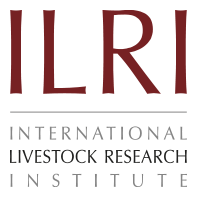Marwar
Origin and distribution: Breed derives its name after “Marwar” region which is the natural habitat of the breed. Mittal (1988) and Rohilla and Patel (2003) described breed characteristics and production performance. It is found in an extensive area in Western Rajasthan comprising of Barmer, Jaisalmer, Jalone, Jodhpur, Nagaur and Pali districts. The breed is also reared in adjoining areas of northern Gujarat and up to Agra district of Uttar Pradesh. The small flocks are stationary but the migration of larger flocks is the routine practice during the lean period. They start migrating in the month of March-April in many directions through their well-established routs and return back to in the month of July. Most goats are kept on extensive farming system.
Physical Characteristics: Coat colour is predominantly black but animals with brown and white markings are also found. The coat is shaggy and dull in appearance and contains long hairs. The ears are long, flapping and drooping. Both the sexes possess horns which are medium in length, directed upward and backward and pointed at tips.
Males have longer and stronger horns than the females. Wattles are present in some animals. One third of the goats possess beard. The body length, height and heart girth is 71, 74 and 71 cm in adult males and 64, 29 and 68 cm in adult females.
Production and reproduction performance: Rai et al (2004) estimated least square means of body weight at birth, 3, 6, 9 and 12 months of age which were 3.05±0.05, 11.35±0.17, 14.94±0.21 and 23.19±0.18kg respectively. While Singh (2003) observed that the does weighing 33.2±0.81, 35.9±1.47 and 33.5±1.11 kg soon after kidding reached at 33.2±0.85, 35.9±1.22 and 35.0±0.78 kg on the 150-day of lactation under the three respective systems.
Singh (1997) studied the slaughter weights which were 24.3±1.38, 28.3±1.81 and 31.9±0.95 kg at 6, 7.5 and 9 months respectively, dressing percentage 44.4±1.17, 44.2±0.70 and 47.4±0.53 on live weight basis, lean percentage in the dressed carcass 74.1±1.12, 78.0±0.64 and 80.3±0.83, and bone percentage 25.9±1.12, 22.0±0.64 and 19.6±0.83.
The does maintained under extensive, semi-intensive and intensive systems produced a total of 73.5±5.89, 100.5±7.19 and 88.6±2.90 kg of milk, during the first 150 days of lactation amounting to 490±19.1, 670±7.2 and 591±24.7 g/head/day, respectively. Sindhe et al (2004) reported that does produced 53.31 and 75.44 kg milk under intensive, 65.15 and 86.13 kg under semi-intensive and 49.08 and 64.97 kg under extensive system during a lactation period of 90 and 150 days respectively. The average age at first kidding and kidding interval is 563 and 375 days. Twinning varies from 10 to 13%. The milk yield is 110 kg in a lactation period of 196 days.
Kumar et al (2005) found substantial genetic variability in microsatellite markers with average polymorphism across the studied loci and the expected gene diversity in the population were 1.295 and 0.623+or-0.041, respectively. They also observed that population significantly differentiated into groups, and showed a fairly high level of inbreeding (F =0.264 ± 0.046) and global heterozygote deficit. The bottleneck analysis indicated the introduction of unique/rare alleles by the immigrants.
References





